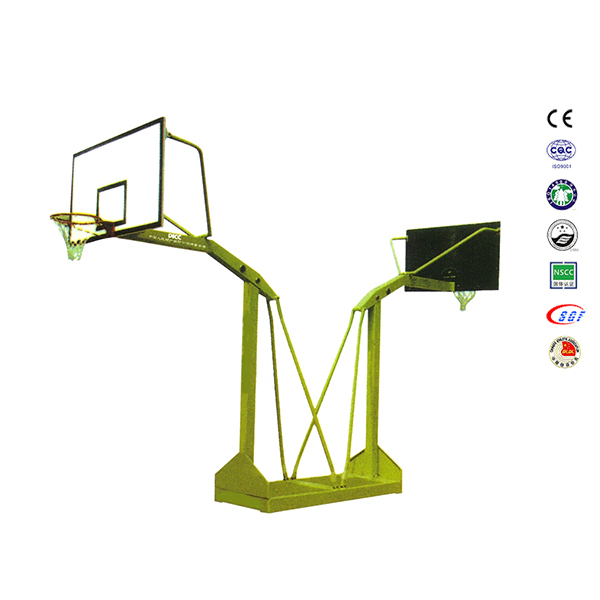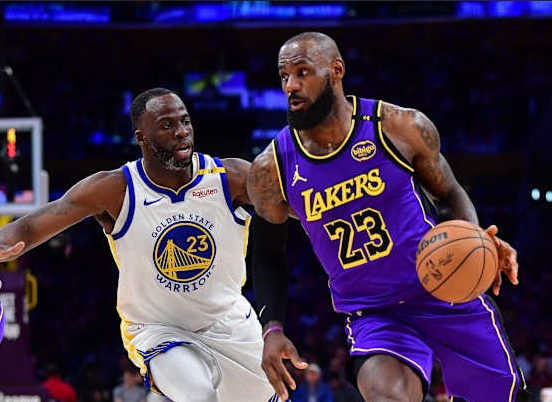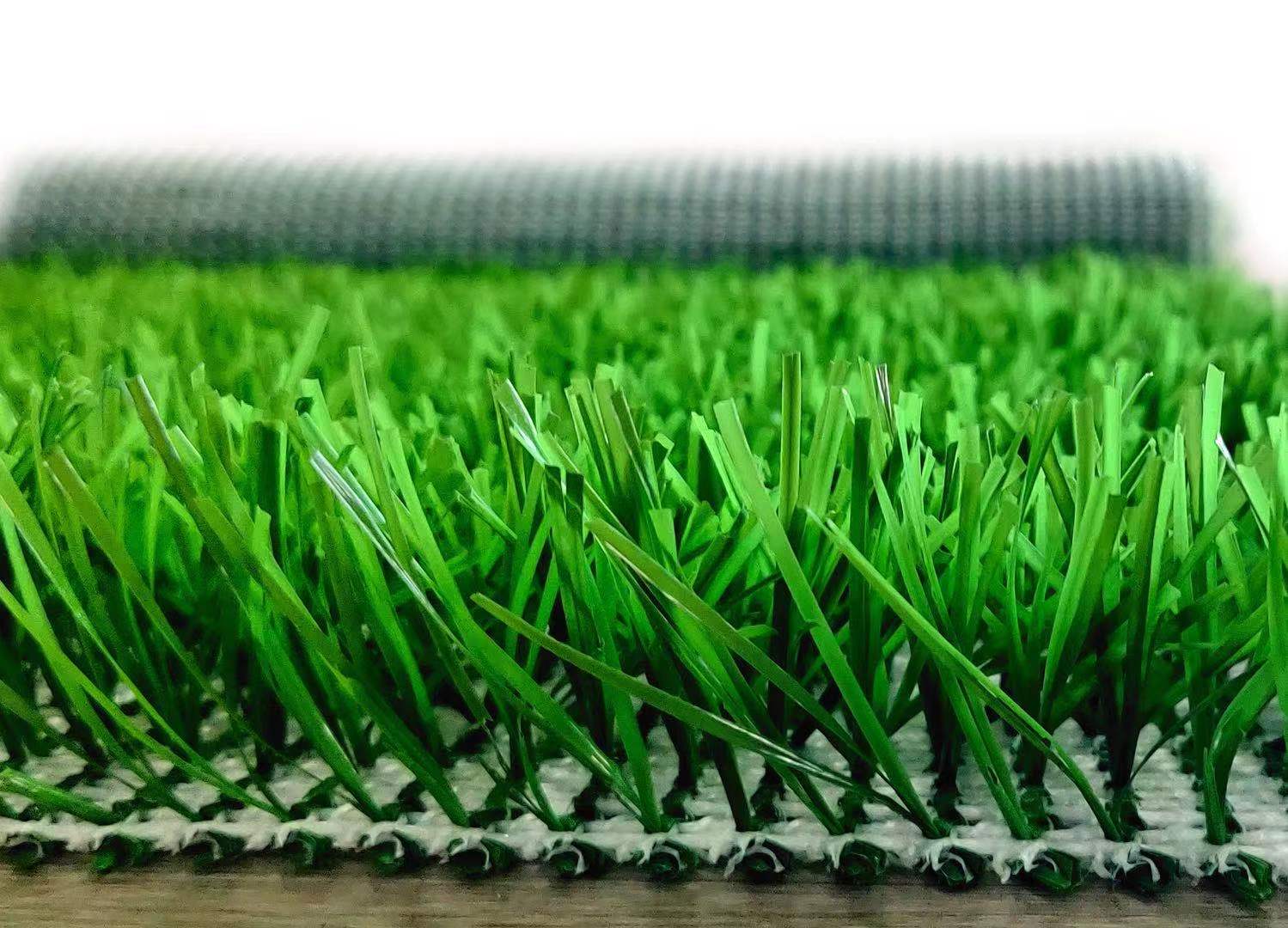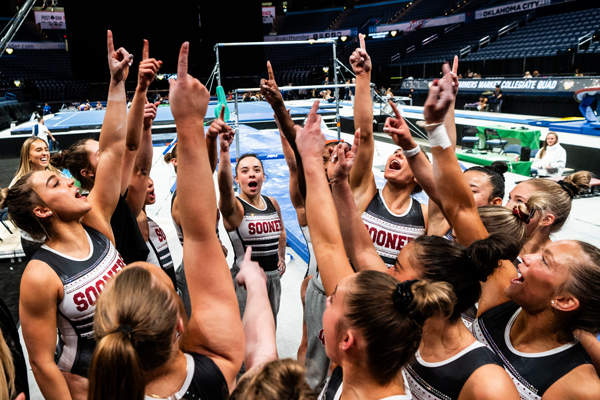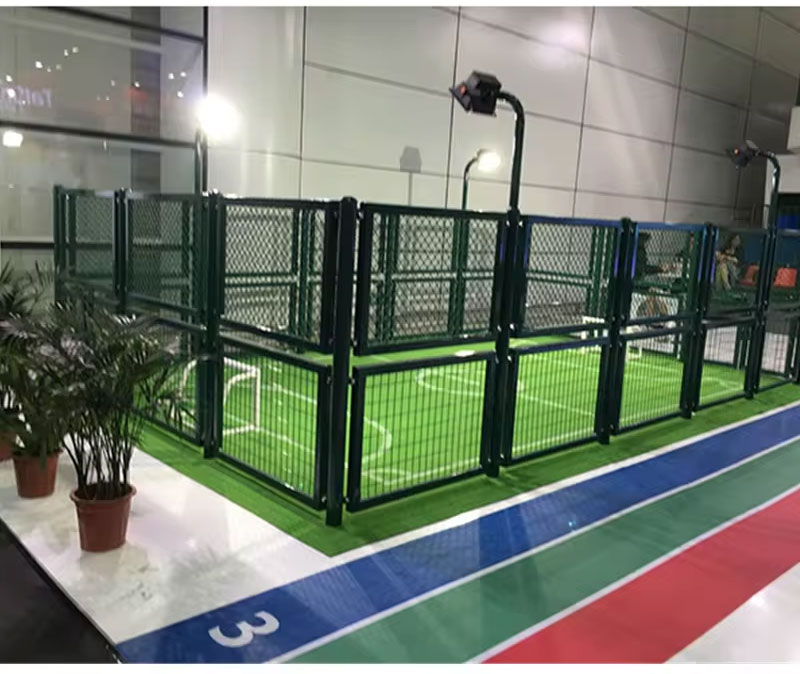Product
How long is a football training session
Basic Info
The specialized training method generally combines football specific physical training with general physical training. Strength training generally includes centripetal force training, basic force training, isometric muscle training, and muscle endurance training;
Speed training generally includes training on reaction speed, movement speed, displacement speed, etc; Aerobic endurance training generally includes recovery training, low-intensity aerobic training, and high-intensity aerobic training; Anaerobic endurance training generally includes continuous training, interval training, repetitive training, and competition training; In addition, there are various trainings such as flexibility, agility, and coordination.
I once had the opportunity to give a training class to a semi professional team in China with UEFA Pro coach Giles Stille (who mainly trained national team players in various leagues in Sweden and participated in the UEFA Cup). This coach used to be a player in the top English league, and later worked as a coach in various mainstream leagues, cultivating excellent players (European strong national team players), winning honors in European competitions, and so on. It can be said that he has a wealth of experience. As a football commentator, this training session is also a rare opportunity for learning.

Training duration: 1 hour and 40 minutes (including rest time between activities)
Number of players, 14-16 (some players withdrew due to injury). The last 14 players participated in the game, including two goalkeepers. Their age is between 20-30 years old, and some players have played in first and second tier leagues.Venue: Standard 11-a-side half court (8-on-8 court)
Equipment: signage, goal, tactical board, ball
Training subject structure
1. Warm up activities
2. Passing and receiving practice
3. Group Stage (SSG)
4. Practice matches
The entire training process
Preparation before class, venue setup, 15 minute waiting time, warm-up activities, synchronized setting of passing and receiving practice area
Briefly introduce yourself, introduce the training content for 3 minutes, and then proceed with the formal training
1. Warm up for 15 minutes
Slow jog in circles and explain the activity for 1 minuteWarm up activity 1: Rotate the ball and insert appropriate stretching movements
Venue setup:
The initial setup of the venue includes the setting of the next few activities, which should be set up without interfering with each other.
Standard 11-a-side half court (8-a-side)
The first part of the warm-up activity is located in the lower right cornerActivity process:
Bring the ball to the sign at a relaxed speed, turn around with the ball on the outside of your feet, and perform warm-up exercises such as stretching
Advanced activities:
Techniques such as crossing the outer side of the ball, turning around with the ball on the instep, and still turning towards the direction of the sign.
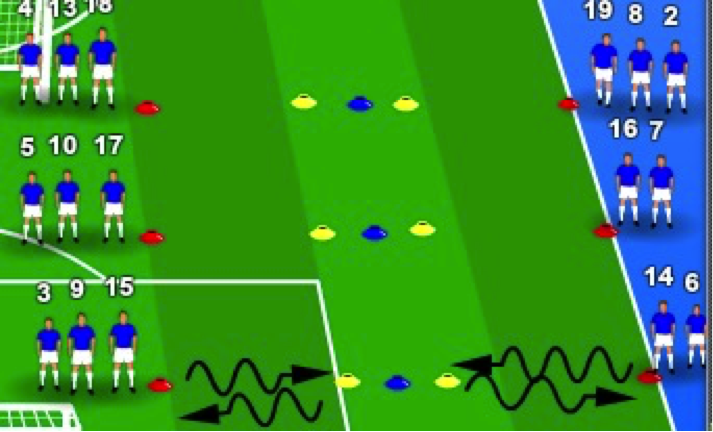
Teaching points:
basic movements of dribbling, turning skills of turning the ball, watching the ball, looking ahead, and starting the preparation posture.
Warm-up activity 2:
Dribble the ball past the marker and pass it to the opposing player.
The basic setting of the venue is the same as that of Activity 1, with some adjustments in the advanced part.Activity requirements: Players from both directions should dribble the ball to the middle at the same time to avoid collisions and pass the ball with high quality. This activity only requires using the outside instep to turn the ball, not the inside of the foot, and gradually accelerate.
Advanced activity:
Opposing players are arranged on both sides of the sign plate, staggered, and the dribbling player dribbles the ball to the middle, passes the center sign plate, and passes the ball to the opposite player. The two sides stagger at the same time.
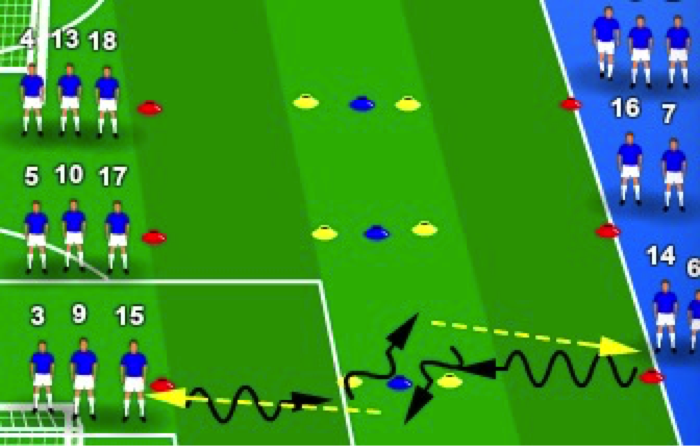
Teaching points:
attention, observation, response, passing speed, ground passing, ball dribbling and direction changing techniques, follow-up running, starting preparation posture, and catching preparation posture.
Comments on the activity:
The players' condition gradually improved, from making mistakes at the beginning to gradually accelerating the pace and then making low mistakes and high-quality passes, entering a training state; observation and response are still relatively weak.

LDK Portable Aluminum Football Goal
2. Practice passing and catching for 25 minutes
Activity 1: Zone passing
After the warm-up, the players drank water and took a short break before going to the passing and receiving practice area.
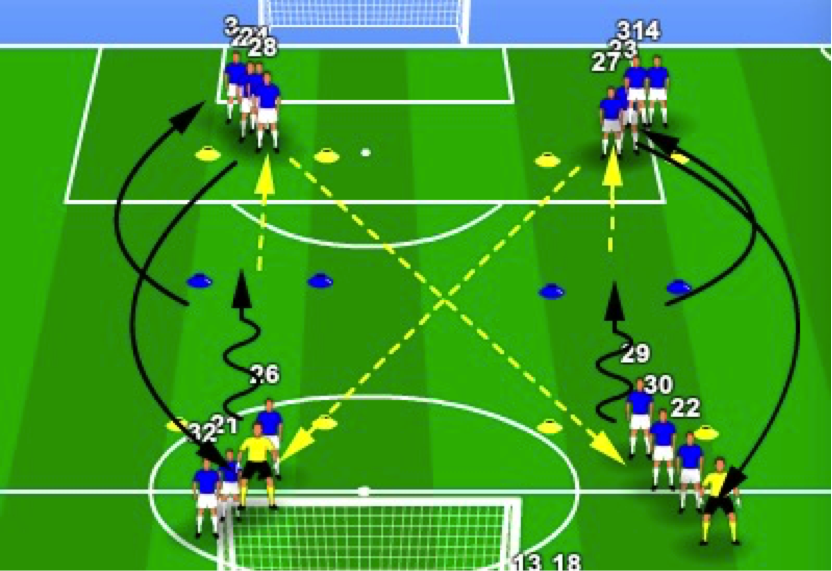
Venue setting and Activity process:
1. The players are evenly distributed and stand in four corners, while the goalkeeper continues to participate in this part of the practice;
After the practice starts, a player first dribbles the ball to the middle marked area (black arc-shaped arrow), then passes the ball to the opposing player (yellow dashed line), and runs from the outside to the back of the opposing team.
3. The other group starts with a delay of 1-2 seconds.
After receiving the ball, the opposing player diagonally passes it to another group of opposing players (indicated by diagonal yellow dashed lines) and runs from the outside to the opposing queue.
5. Repeat the cycle
6. Certain requirements can be set, such as the number of touches.
Advanced Activity 1:
Require the second receiver to start disengaging (from the diagonal passer), using the marker board as the imaginary enemy, then catching the diagonal ball handler and quickly starting to disengage from the marker board to receive the ball (solid red line). Separation can also be done from any direction, but it must meet requirements such as the number of touches.
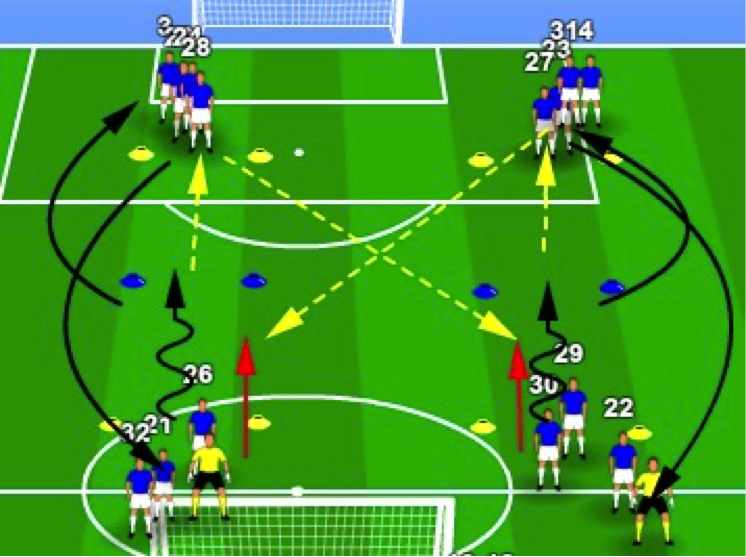
Teaching points:
Quick start to get rid of, observation (different moments of passing and receiving), response, space utilization, seeking gaps, attention, quality of passing and receiving.
Activity Advanced 2:
After passing the ball diagonally, run diagonally with the ball (white solid line)

Activity review:
Through the demonstration of the tactical board, the team members have no significant deviation in mastering the basic process; Two groups started late to avoid diagonal passes and stumbling during running; In the initial stage, there were problems with observation and reaction, mainly reflected in the lack of eye contact and verbal communication among team members. Team members were too focused on the ball under their feet and lacked observation of the position of the receiving player. Under the pressure of speed, mistakes sometimes occurred; Therefore, in addition to basic skills, the theme of the activity mainly emphasizes observation and reaction, watching people before receiving the ball, watching the ball for a moment after receiving it, and then returning to the observation state; Under constant reminders, the team members' reactions grew stronger and the atmosphere gradually became lively; Subsequently, requirements such as following up on running and starting with a broken ball were added, and the team members understood without deviation.
Passing and receiving activity 2:
rushing circle (the goalkeeper participates in all previous passing and receiving activities, and after the rushing circle starts, the goalkeeper warms up alone)
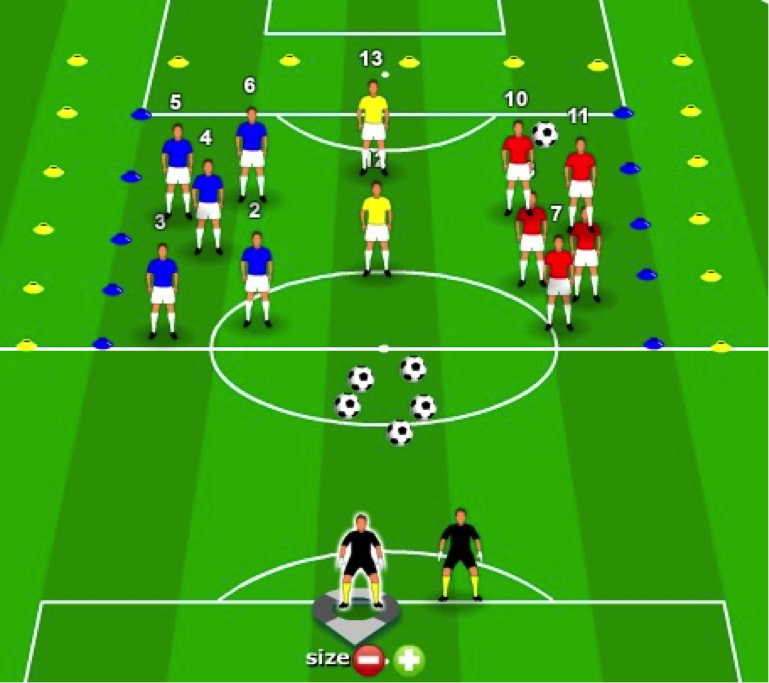
Activity process:
1. Small inner circle field, grouped according to the number of participants (12 people), 5v5+two neutral players;2. Set different touch requirements for grouped players and neutral players;
3. Grab the ball from the coach's feet after leaving the field;
4. Gradually increase the point system, multi-point ball control, etc;
5. Transition from Small Venue to Large Venue (Outer Ring)
Teaching focus: On the basis of previous activities, increase active pressure, emphasize observation and reaction, transition between offense and defense, and attention.
Event Review:
After resting and starting a new activity, the performance of observation and reaction entered a low point again. After the ball went out of bounds, the player was not actively trying to take the ball, but gradually improved to a state of autonomy under constant reminders; After the first few minutes and a high initial error rate, gradually enter a continuous scoring state (passing more than five times in a row); Insufficient space utilization and observation ability; The main purpose of transitioning from small circles to large circles is to enhance players' sense of spatial position, encourage the search for gaps, and utilize the space on the field; Under constant reminders and guidance, achieve the goal and end the activity.
3. Group Game (SSG) 20-30 minutes
Field setting: The penalty area line is set to the center line of the group confrontation, and both sides of the penalty area are the width of the field for confrontation.
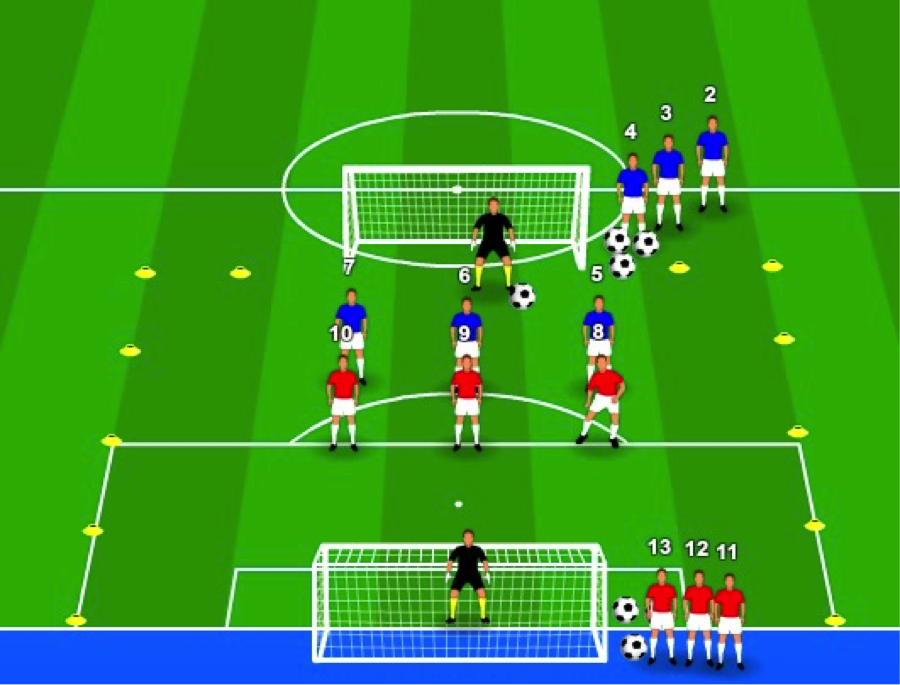
Activity process:
1. 35 seconds 4 vs 4 (including goalkeeper), rotating every 35 seconds, 4 groups of 3 teams, 2 teams on each side rotating (no 35 seconds).2. In each round, the kickoff team prepares to kick off in their own half, while the defensive team lines up in the center line;
3. Introduce rules such as restricting touch when appropriate.
Teaching points:
Continuing the teaching points from the previous activity, increasing the width, emphasizing running clearances, and encouraging ball breaks.Event Review:
The players feel uncomfortable with the entire rotation system, and the rotation speed is not fast after the 35 second timeout. Considering that this is the first time these players have come into contact with it, there is no requirement for rotation speed; The players still maintained a full field confrontation within 35 seconds. 35 seconds embodies the core of training - high-intensity interval training (HIIT). Ensure to reach the highest intensity in a short period of time, and then restore to high intensity after appropriate recovery, in line with the rhythm of high-intensity competition. 35 second confrontation, with each team calculating rotation time and resting for 45-50 seconds. This is also an improvement in observation ability, focus, and offensive defensive transition, which have been emphasized throughout the training.
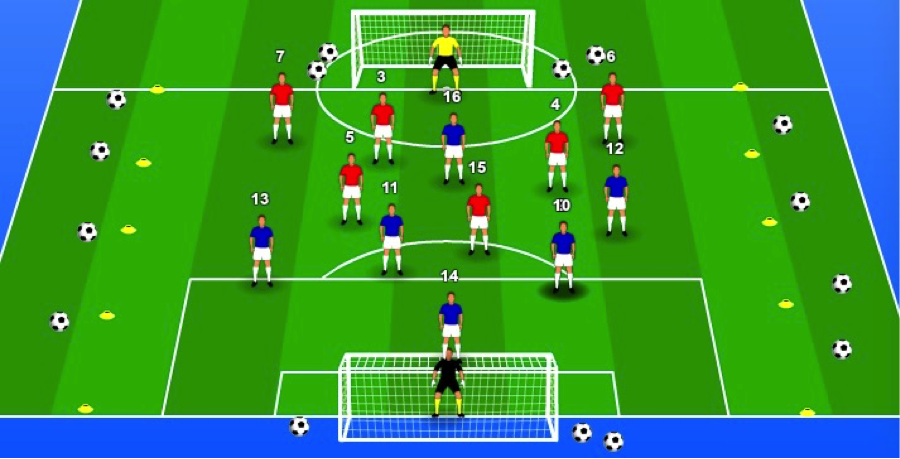
4. Practice match
Event Review: Due to the large number of players, the final practice match was set at half court length, slightly wider than the penalty area, continuing the intensity of a 3-on-3 match and observing and responding to appropriate reminders. But compared to the early stages of training, there was a significant improvement, and in the end, the players reported much higher intensity than usual.Training purpose:
High intensity interval training, as the name suggests, refers to short, high-intensity rhythmic intervals that emphasize acceleration but provide sufficient recovery time to achieve higher training efficiency.Training process:
Training progresses from shallow to deep, partly due to insufficient understanding of the players during training, with the aim of mastering the details. Gradually increase speed, intensity, and pressure, and ultimately demonstrate a certain level of intensity during practice matches, showing a gradual effect. Multiple training activities reflect progress and change, including adjustments to the venue.In fact, in regular training, it is not realistic to find all the points such as the size and distance of the field at once,
More importantly, identifying problems in a timely manner and making immediate adjustments to adapt to changing circumstances is the big problem. In this training,
There are also arrangements for quickly adjusting the venue, out of respect for the players who may be meeting for the first or only time,
During the transition process, not too much pressure was applied, perfectly matching the high-intensity intermittent rhythm.
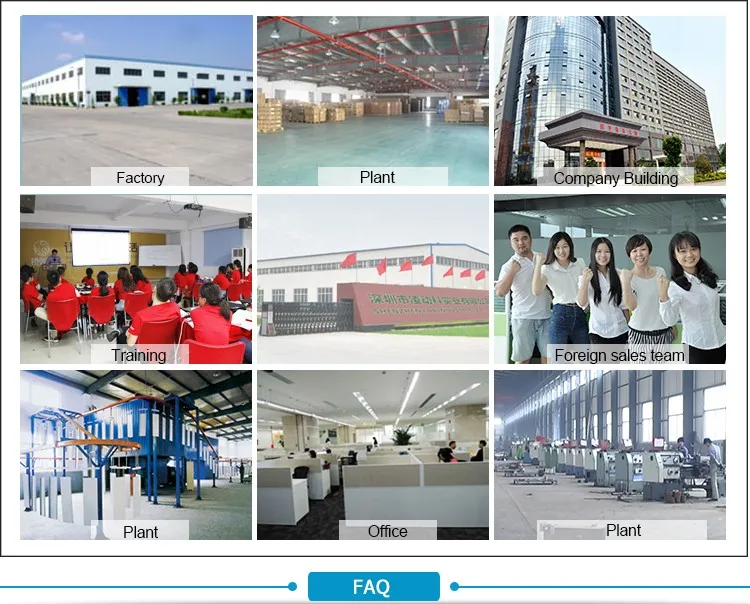
l Teaching points:
The most important teaching points throughout the training include observation, reaction, pressure, finding gaps, starting, escaping, passing quality, etc; And these are also what players lack the most. This also reminds me of the SSG and Ajax passing training courses held by the British A-level coach last year, where many of the same elements were emphasized and integrated into the training as the basic awareness of technical and tactical skills.
Many exercises may be familiar to everyone, and the teaching points are also clear on paper. So the differences reflected by professional coaches are more in the control of clinical rhythm, frontcourt control, observation of details, and response and adjustment to various situations.
The manifestation of players' abilities:
The fundamental reason for people's understanding of the current situation of the Chinese national football team is that they have been stuck in the basic stage since childhood. In addition to essential ball control skills, the more important thing is the lack of training in technical and tactical awareness, such as observation and reaction to teaching points. The key lies in whether to watch the pass, whether to receive the opponent, whether to strive for more space, etc; From the training class, there are shortcomings. For players who are shaped into their 20s, there are many things they should have been exposed to since childhood.Professional coach's attitude:
In the spirit of professionalism, professional coaches do not pay too much attention to the current technical level of players, but strive to demonstrate progress in training classes and tolerate certain mistakes. In the process of gradual progress, it may be the first time or the last time. The process of coaching these players has achieved progress and ultimately affirmed their attitude.One point worth learning from many youth training coaches is that often they are too concerned about the existing abilities of their players, and their energy should be focused on improving the abilities of their current players. In other words, can a professional coach improve the performance of any player he takes over? It is to enable them to improve on the existing foundation; It's not that we are dissatisfied with the abilities of existing players. In fact, many times dissatisfied players have not fully realized their potential, which is worth pondering.
Other comments:
The foreign teacher finally sighed that after more than half a year, there was finally a serious and efficient person to help convey instructions, which led to today's training class. In fact, during home training classes, there are no more than dozens of technical and tactical keywords. This foreign teacher has also learned some languages himself, some of which he has now learned and used, such as' pushing ',' passing ',' shouting ',' watching the ball ', etc. As a football commentator, this is even more important when explaining an event. Of course, as a coach in the process of translation, one can integrate their understanding of techniques and tactics, efficiently convey information, and also play the role of an assistant coach, which is more effective than simply translating. So serious football translation still needs to develop from serious coaches.

More LDK football product recommendations:
Football Cage
Futsal Goals
Metal Football Goal
Aluminum Football Goal
Foldable Football Goal
Portable Football Goal
LDK sports equipment manufacturer's promotion is in progress: Click to contact us now
Futsal Goals
Metal Football Goal
Aluminum Football Goal
Foldable Football Goal
Portable Football Goal






